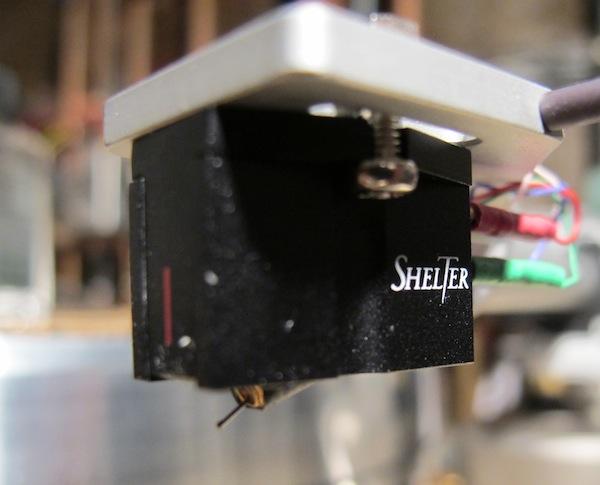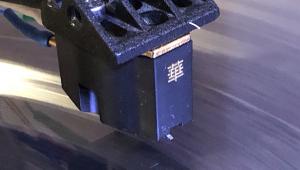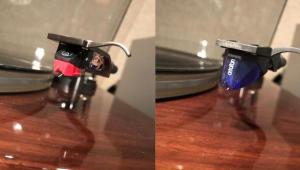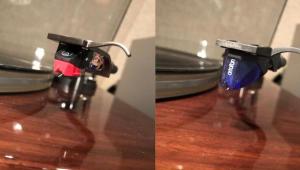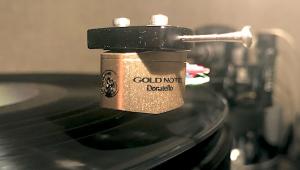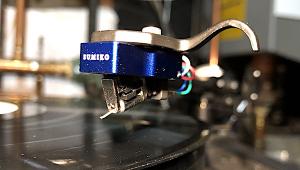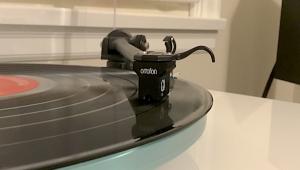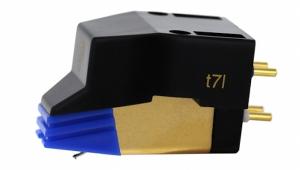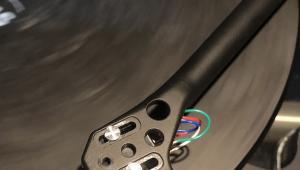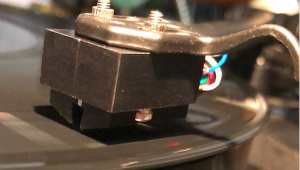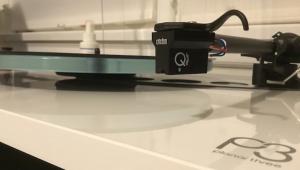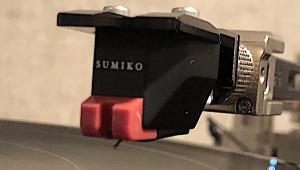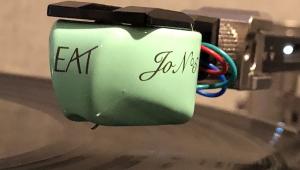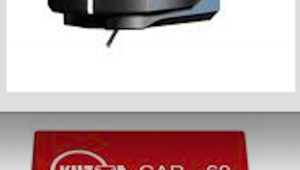I had the MkII in my system and found it bland, and I listen to a wide variety of music. I found it had neither the tactile richness of my Grade Master nor the quickness of some other cartridges. I ended up with a Benz2 wood body. Not the be all, end all, but a better set of compromises for my taste.
Gimme Shelter! 501 Mk III That Is
Compared to what I hear at Avery Fisher with the New York Philharmonic, this was all warm string tones, burnished brass, deep bass from the double basses the likes of which you just don't get at Avery and an overall orchestral cohesiveness that was part well-honed orchestra and part Carnegie.
Afterwards I posted to Facebook "The sound was unfortunately marred by euphonic colorations, high levels of total harmonic distortion and a wide, deep bloated soundstage probably resulting from L-R artifacts". I forgot to include the "pop and clicks" caused by coughers, sneezers and the seated restless.
In other words while I'm not suggesting my stereo sounds as good as Carnegie Hall, in some ways it comes pretty darn close when playing records but never digital. Never. Right now, using the Shelter 501 MKII, I'm playing an Electric Recording Company test pressing of the Beethoven Violin Concerto with Leonid Kogan and the Paris Conservatoire Orchestra conducted by Constantin Silvestri (EMI SAX 2386). LIke the label's Johanna Martzy reissues, this one from 1960, in stereo, was mastered from the original analog tape using an all-tube cutting system meticulously restored by Sean Davies. And like the Martzy, this one's original artwork and packaging have been meticulously reproduced to where you'd have difficulty knowing an original from the reissue (except that the Columbia label had to be changed to EMI due to copyright issues). I will review it soon. And yes, it is costly but before going to The Electric Recording Company's website, consider that an original in mint condition sold late December on Collector's Frenzy for $6169! Only 300 copies will be pressed and then no more.
The point of all of this is that the warmth, lustrous string tonality and soothing smoothness I heard at Carnegie were brought home through the combination of this wonderful sounding reissue and the $1295 Shelter 501 MKIII. I'm not being exaggerating. Well maybe a little.
I reviewed the Shelter MKII way back in 2005 and recommended it unhesitatingly. The analog world has literally exploded since 2005 with new cartridges, turntables, and of course vinyl and the price of the cartridge has gone up from around $800, but it still is a wonderful sounding cartridge for certain applications. More so some than others.
The improvements made to bring it to MKIII status are unspecified, but I see from the info sheet that the output has been increased from .4mV to .5mV either through more efficient magnets or a few more coil turns. Regardless, this is a low output MC cartridge with an aluminum sheathed boron cantilever to which is attached a .3x.7mil nude elliptical stylus. Recommended tracking force is over a wide range from 1.4 to 2.0 grams. DC resistance is specified as 14 ohms, which means loading of around 100-150 ohms should work well as would an approximately 10x (20dB) SUT. The cartridge weighs 8.1 grams.
Since I haven't heard the MKII since 2005 I can't compare this to it, nor do I know why the price has jumped from $795 to $1295 if all that's been done to add a roman numeral is a few extra turns of wire. However, the MKIII's sound matches what I wrote about the MKII: it is a warm, smooth, velvety-rich sounding cartridge that manages all of those things without sounding frustratingly soft or unctuous. Its tonal balance is relatively neutral so that whatever contributes to the warmth doesn't scream at you "lower mid-bass boost!" or "rolled top end!"
Instead, the Shelter MKIII just plays music that has body, warm tonal depth and silky smoothness. It doesn't shine a light on anything nor does it expose vast space encoded in many record grooves. It is not the most detailed cartridge, probably a result of its mild elliptical stylus profile. If you demand all of the detail engraved in your records you will have to get a cartridge with a more severe line contact, Shibata or Geiger stylus profile. Those shapes can get into the sharp high frequency crevices a elliptical slides by.
The upside of missing that bit of detail is that the Shelter also misses noise, pressing defects and other undesirables picked up by the more detailed cartridges. You can find more severe stylus profiles on some moderately priced cartridges but the tradeoff is accentuation of high frequency non-linearities that produce brightness, etch, grain etc.
The Shelter MK III just glides through the grooves, tracking well at 1.6g and producing music that's easy to listen to and enjoy completely. I'd recommend it at its price point if most of your listening is to jazz, classic and/or acoustic music. Female voices sound luscious. However, if you listen mostly to amplified music you might find the balance a bit soft and/or bland. Unless, that is, the rest of your system is bright and etchy and in need of some high frequency and especially transient taming.
I put the Shelter 501 MKIII in a Palmer turntable that's way out of its price league and yet the together the two had me listening long into many evenings while the Caliburn and the VPI Classic Direct sat idle across the room. Now that' saying something!
- Log in or register to post comments


A reviewer as influential and respected as Mikey infers that live music, in Carnegie Hall no less, comes very close to what he hears at home. As a musician and someone who has been in Carngie for hundreds of concerts over the years I can tell you without doubt that there is no electronic substitute for the real thing. Yes, Avery Fisher Hall is not very good. Actually most late twentieth century concert halls are not very good when compared to Carnegie but live music is still live music regardless of where you sit, who sneezes, who coughs, or crinkles program pages. The original event ends at the first sound wave pressurizing the microphone. Then it passes through hundreds of feet of wire, tubes, electronics, mixing boards, etc and that is before it goes through more of the same in replay in your home. I love this hobby, but there is nothing like the real thing. To infer otherwise is like saying that a photograph of The Grand Canyon is like being there.

I think you may have that backwards: "In other words while I'm not suggesting my stereo sounds as good as Carnegie Hall, in some ways it comes pretty darn close when playing records..."
I don't think anyone would disagree that live music is the real thing while recordings are an attempted recreation of it, or an illusion of it. I could be wrong.

IMHO you are making what I call The Harry Pearson Mistake: treating live classical music as the reference point for recorded classical music.
But don't worry: you are in the vast majority and I am in the tiny minority who know and understand enough about communication theory not to make such a mistake.
In fact, recorded music is its own medium, with its own creations, its own art. The most advanced practitioners know this and take the opportunity to make new art through it. As an appreciator, your appreciation can progress by realizing this.
You may have a strong personal preference for attending live classical performances, but such a preference is no more objective than having a strong preference for paintings over sculpture. Different media.

I've been disappointed for years at how dead it sounds in in AFH, however, the last two times i went i sat in the nosebleeds -- 1st couple of rows in the 3rd tier -- and it sounded FANTASTIC. it wasn't quite carnegie, but it was great. Try it.

Perhaps I am Mike. I just get very nervous when people in the industry get too close to the subject of live v/s recorded performance. I like your words in your answer.
regarding AFH, I've sat all over the place. Nothing about the hall is uniform. I attended a concert with the Dresden about 8 years ago and I was somewhere upstairs and it was quite empty. I was able to move to 3 different positions during the concert and the sound went from atrocious to fairly good. The Met suffers from the same thing. Sit too close to the side walls in the orchestra and you will get irritating second reflections making it sound as though the orchestra is not playing in synch.

... they could have at least gotten rid of the horrible old open ended cartridge mounts and maybe used the tapped body from the old 901.

My experience with live music has been mixed. Sometimes live music sounds better than what I can achieve in my living room, sometimes not. I realize this is off topic and I'd like the chance to discuss this topic on a related thread.
It has been my experience that nearly every concert is electronically reinforced. Rock bands, folk bands, jazz combos, jazz pianists, even chamber music. Everthing has a microphone and amplifier and a loudspeaker in the chain. Throw in a digital mixing board and now you have ADCs and DACs in the chain as well. The only thing missing is a length of tape. Take into account the mediocure quality of most live equipment, especially loudspeakers, and you have a recipe for sound that isn't as good as what can be heard in a lot of living rooms.
Thus I do not believe that live music is necessarily better sounding than pre-recorded music. Get rid of the electronics and live music will sound a lot better, if you can hear it at all past the chatter box in front of you.

I can testify that a Soundsmith Level-Two retipped 501 MKII is a remarkable instrument. FWIW theI don't think the 501II has been sold at $800.00 for a long time: I think I last saw them around $1200.00.

Every time I hear music live, I'm always taken back by how laid back and relaxed it is. We audio geeks talk in terms of "sound staging," "detail," "transparency," "depth," etc. I've never used those terms when listening live, no matter the venue, be it a jazz trio or a full symphony. I've always thought that the benchmark of a good home audio system is when your listening friends stop saying "your system sounds great," and instead begin to say: "those guys sound great."

I have to agree with Mr Fremer
To me, a very good vinyl record on well set up gear, can provide a musical experience that is sometimes as emotional, thrilling and involving as the real thing. And I am talking about my affordable system, not precisely a continuum here.
How is that possible I don't know.
I suppose that is why vinyl records are still around
Those old Decca records from the fifties and sixties oh boy......
